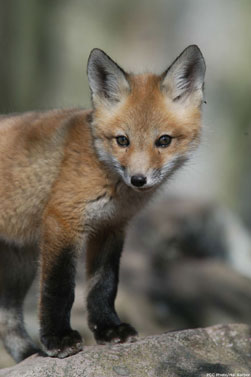Biodiversity Studies
The term "biodiversity" coined, in 1985, as a contraction of "biological diversity" refers to the variety of life in all its forms, levels and combinations: including ecosystem diversity, species diversity, and genetic diversity. With the current international focus on the global crisis in biodiversity, the importance of the Commission's work to ensure that the correctness of the scientific names of animals is now of the highest priority.
Two broadly sympatric cryptic species of pipistrelle bats were until recently thought to be the same species, known by the name Pipistrellus pipistrellus. The species were first distinguished by their ultrasonic echolocation calls, with two "phonic types" shown to exist, but they also differ in overall geographical range, habitat, diet, "social" calls, mating groups, skull morphology and DNA sequence. It was proposed that the species with the lower-pitched calls should be denoted by the name P. pipistrellus, and the name P. pygmaeus, a pre-existing name in synonymy, for the smaller species, which calls at a higher frequency. The Commission ruled in favour of this proposal, and the two names were placed on the Official Lists. [2003]
Wild vs. domestic animal names. The majority of domestic animals and their wild ancestors share the same name but in a few cases the two forms were named separately, which has created confusion. It was proposed that the first available specific name based on a wild population be adopted. Therefore, despite the fact that these names post-dated or were contemporary with those based on domestic derivatives, the Commission recently conserved, as valid, the usage of 17 species names based on wild species. The following names were therefore placed on the Official Lists: Equus africanus (ass), E. ferus (tarpan), Camelus ferus (Bactrian camel), Lama guanicoe (guanaco), C. vicugna (vicuña), Bos primigenius (aurochs), B. gaurus (gaur), B. arnee (water buffalo), Poephagus mutus (yak), Capra aegagrus (wild goat), Ovis orientalis (Asian mouflon), Cavia aperea (guinea pig), Canis lupus (wolf), Mustela putorius (polecat), Felis silvestris (wildcat), Cyprinus gibelio (Prussian or gibel carp) and Theophila mandarina (mulberry silk moth). [2003]
The generic and specific names of 24 mammals proposed in the Catalogue des Mammifères du Museum National d'histoire naturelle by Étienne Geoffroy Saint-Hilaire 200 years ago have generally been accepted as available and valid and therefore widely used. However, the status of the Catalogue as an acceptable work, and hence the validity of the names introduced in it, have been periodically challenged due to confusion about its publication. It was considered unavailable in the important Mammal Species of the World edited by Wilson & Reeder (1993) with different names being used in that textbook. The Commission resolved this instability by ruling that Geoffroy Saint-Hilaire's work was available for nomenclatural purposes. This ensured continued usage of the familiar Latin names of several mammals species: a mole, grass rat, fruit bat, tamarin monkey, red fox, jaguarundi and a spiny rat.

